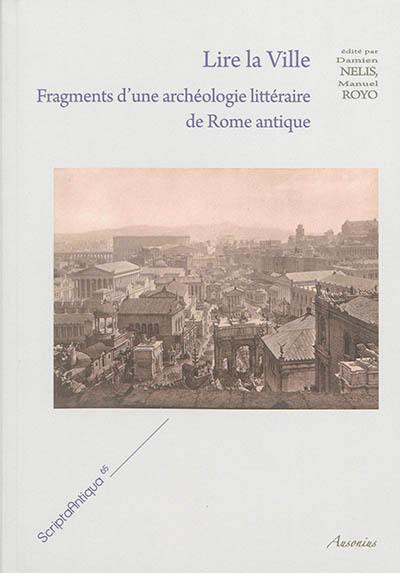
Serie : Lire la ville
Collection(s) : Scripta antiqua
Paru le 04/08/2014 | Broché 303 pages
Public motivé
textes Michel Aberson, Michael Dewar, Catharine Edwards et al.
Les textes littéraires antiques sont souvent porteurs de renseignements sur la topographie urbaine, la nature des monuments ou leur histoire. Parmi les nombreuses approches qu'ils ont suscitées, les auteurs de la rencontre qui a eu lieu en 2010 à Genève ont cherché à sortir du dilemme entre topographie littéraire et littérature "topographique" afin de ne s'arrêter à l'usage fréquent de nos sources qui vise à reconstituer les lieux fréquentés par tel ou tel auteur. C'est avec l'envie d'approfondir des concepts comme celui de paysage mémoriel et les rapports entre la matérialité des lieux et celle, fictive, qu'instaurent les textes, que les contributeurs ont définis deux grands axes. Le premier cherche à croiser rhétorique, histoire et topographie réelle. Le second s'attache à la mémoire des origines et à la mise en scène d'une topographie rêvée, et de fait exploite essentiellement la poésie impériale.
Literary works often provide information about urban topographies and their monuments and their histories. This characteristic of texts has led to the application of many different approaches. From among these, the scholars who met at a conference in Geneva in 2010 deliberately attempted to avoid both literary topography and "topographic" literature and so go beyond the traditional use of texts as sources for the reconstruction of the places mentioned by ancient authors. The aim in doing so was to draw on the potential offered by concepts such as landscapes of memory and to investigate the relationship between physical realities and textual fictionality. Two main strategies came to the fore: the first sought mainly to combine rhetoric, history and topographical realities of the Roman Republic; the second attempted to focus on memories of origins and the creation of imagined places, with a special focus on the poetry of the early Empire.